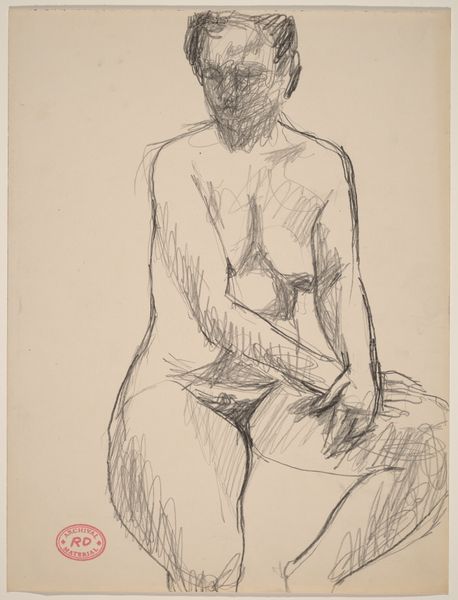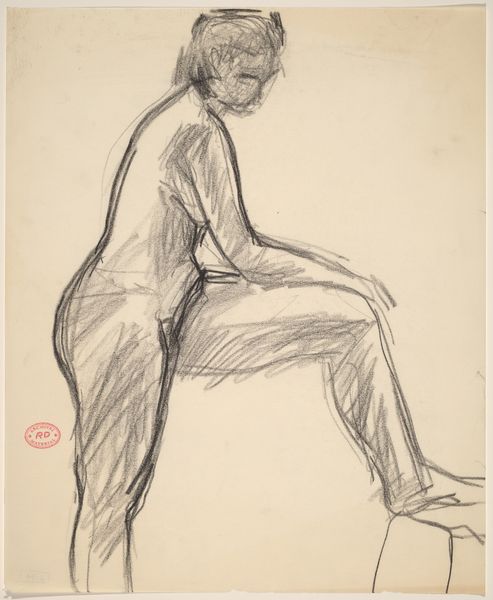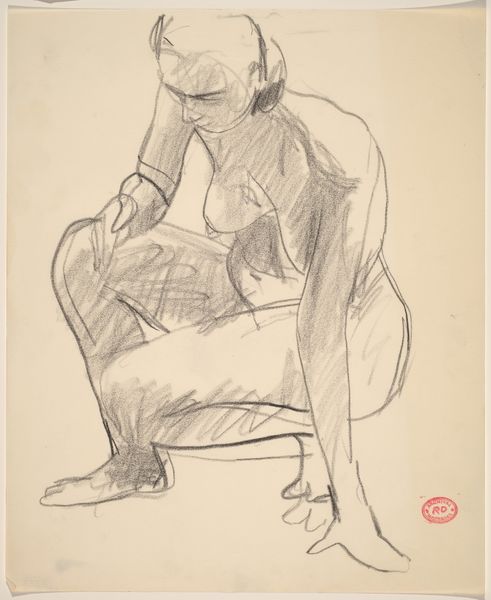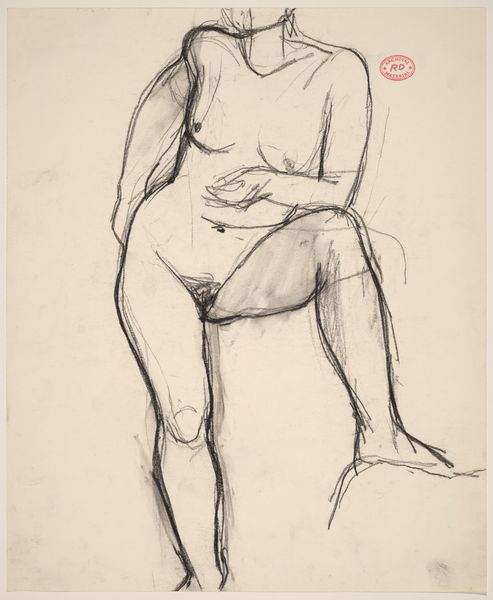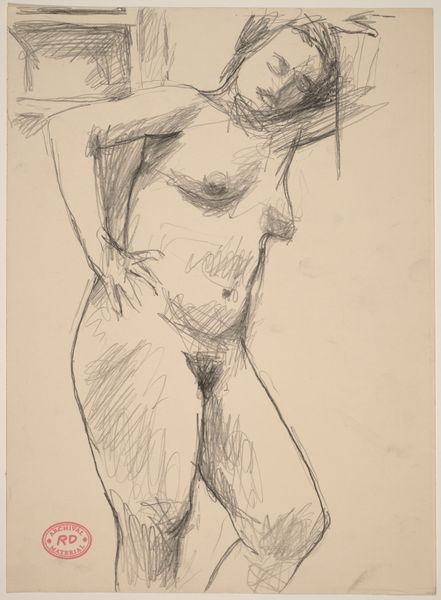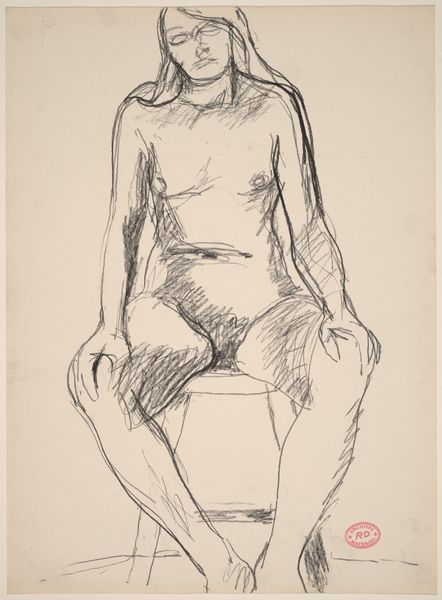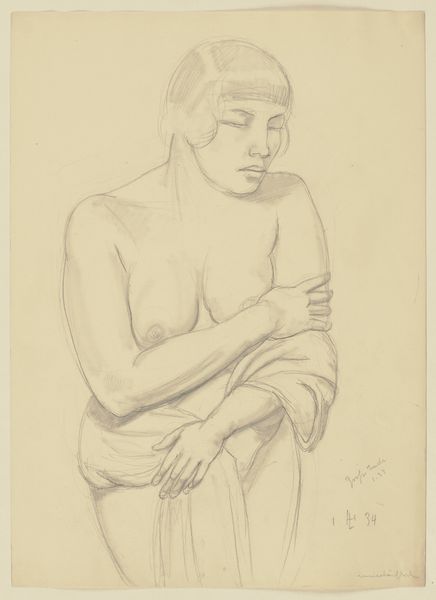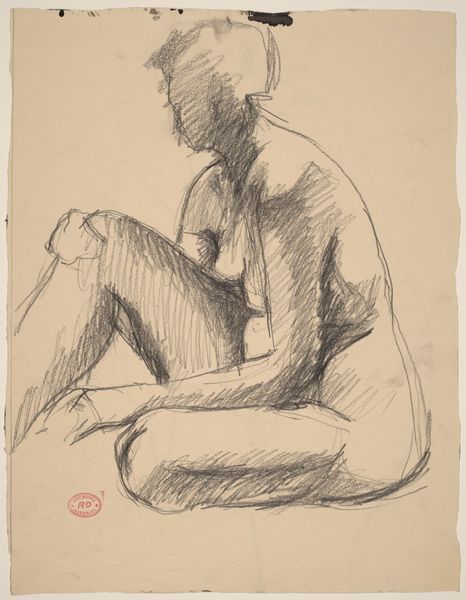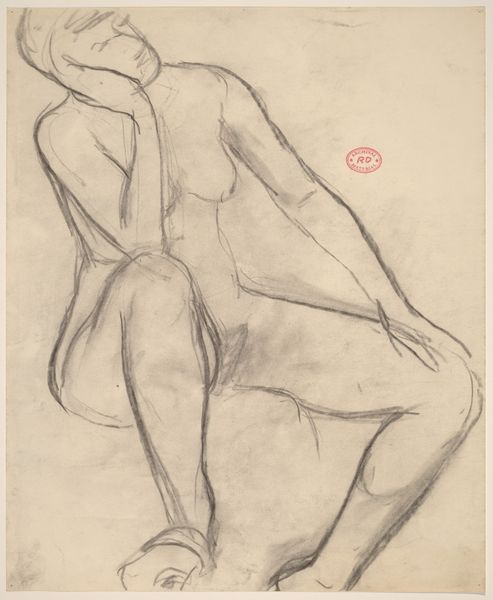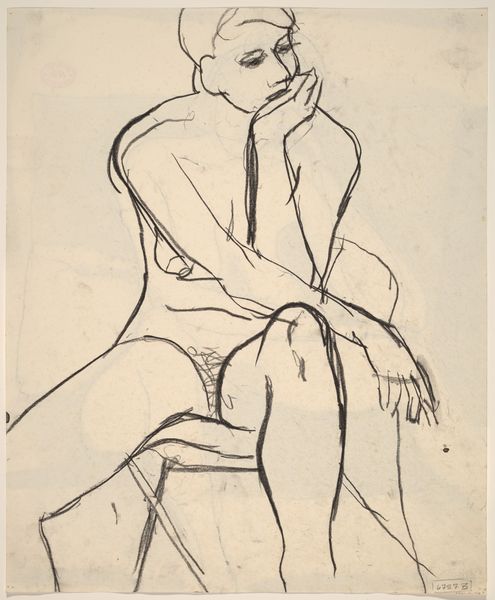![Untitled [female nude seated on a draped stool] by Richard Diebenkorn](/_next/image?url=https%3A%2F%2Fd2w8kbdekdi1gv.cloudfront.net%2FeyJidWNrZXQiOiAiYXJ0ZXJhLWltYWdlcy1idWNrZXQiLCAia2V5IjogImFydHdvcmtzLzA3M2NjNTE0LWNhNTctNGQzNC1hMDY3LWZmYjRlMDA4M2NmMi8wNzNjYzUxNC1jYTU3LTRkMzQtYTA2Ny1mZmI0ZTAwODNjZjJfZnVsbC5qcGciLCAiZWRpdHMiOiB7InJlc2l6ZSI6IHsid2lkdGgiOiAxOTIwLCAiaGVpZ2h0IjogMTkyMCwgImZpdCI6ICJpbnNpZGUifX19&w=3840&q=75)
Untitled [female nude seated on a draped stool] 1955 - 1967
0:00
0:00
drawing, pencil
#
portrait
#
drawing
#
figuration
#
bay-area-figurative-movement
#
pencil drawing
#
pencil
#
portrait drawing
#
nude
Dimensions: overall: 30.5 x 22.9 cm (12 x 9 in.)
Copyright: National Gallery of Art: CC0 1.0
Curator: This is an untitled work by Richard Diebenkorn, likely created sometime between 1955 and 1967. It's a pencil drawing of a female nude seated on what appears to be a draped stool. Editor: It feels incredibly immediate, almost like a study. The lines are quite raw and energetic. I’m immediately drawn to the texture created by the varying pressure of the pencil. It gives the figure a sense of weight and form, doesn't it? Curator: Absolutely. Diebenkorn was working in a period where figuration was often contested by abstract expressionism, but he returned repeatedly to the figure. The rawness, as you called it, can be seen as part of his commitment to representing lived experiences rather than idealized forms. Consider the politics inherent in depicting the female form, especially in relation to debates about gender roles. Editor: And how the very act of sketching with pencil roots it in the tradition of academic figure studies - accessible and immediate. It focuses our attention on Diebenkorn’s technique and labor; it is what has materialized through this creative process. It is compelling to think about how readily available and cheap graphite is and how something so ubiquitous could be employed to depict an intimate moment of contemplation by the model. Curator: I think this speaks to Diebenkorn’s training but also how it's placed within evolving art world institutions, academies, and galleries, with debates circulating about art's purposes. The act of sketching, the preliminary study, also served a purpose when artworks became reproducible. Consider how the rise of print culture impacted art appreciation. Editor: I agree. We must remember to examine the conditions of artmaking! Think of all those other pencils Diebenkorn wore down leading up to this— all those erasures and failures that went into refining his skills. Each tool carries its own cultural context. Curator: Right, the implications for understanding art history. We need to understand how these artworks circulate, the value we attribute to them, and what institutions do to create this art historical record. This drawing gives insight into the artistic milieu from which Diebenkorn came. Editor: It’s incredible how so much information lies within a few graphite lines! Curator: It truly is, offering us a unique vantage point onto Diebenkorn’s evolving engagement with the human form and art history’s continuous unfolding.
Comments
No comments
Be the first to comment and join the conversation on the ultimate creative platform.
